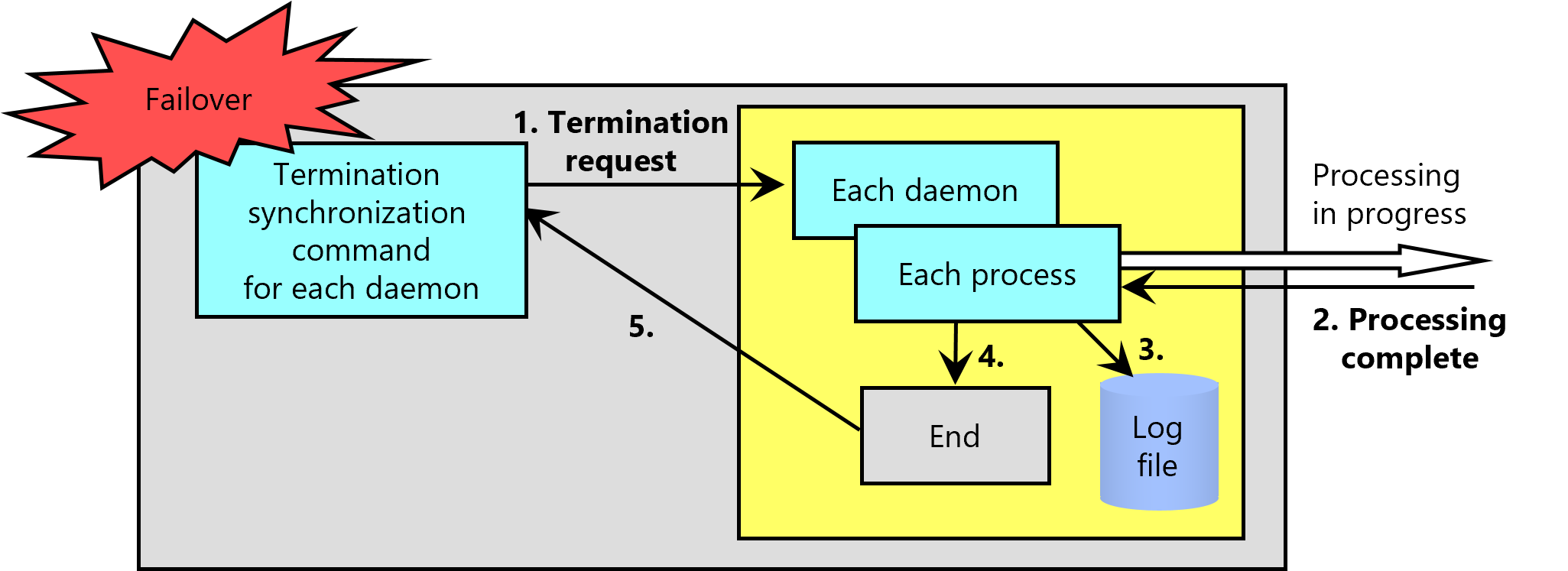Process synchronization mode
If a process is currently running, the daemon terminates after the process is complete.
The flow of the termination of daemons in Process Synchronization mode is explained in Figure 2.6 .
1) Running of the termination synchronization command
Each daemon's termination synchronization command issues a termination request to the corresponding daemon.
2) Completion of processing
If a process is running when a daemon termination request is accepted, the command waits until the processing is completed.
3) Recording of log information
Each process writes the processing result to a log file after the processing is completed.
4) Termination of processes and daemons
After all processes end, the daemon is then terminated.
5) Notification of daemon termination
After the daemon is terminated, the daemon termination synchronization command is notified of the result.
After the Process Synchronization mode is activated, the types of processing that can be requested until the daemon is terminated are as follows:
-
Send
-
Forced Stop request (hulclustersnd -stop -f)
-
Send Cancelation command (utlscan)
-
Unsent Status Queue Modification command (utlschange)
-
Resend Queue List Deletion command (utlresendrm)
-
Send Status Display command (utlsdisp)
-
-
Receive
-
Forced Stop request (hulclusterrcv -stop -f)
-
Receive Cancelation command (utlrcan)
-
Receive Status Display command (utlrdisp)
-
-
Observe
-
Forced Stop request (hulclusterobs -stop -f)
-
Requests other than the above may be refused or ignored.
